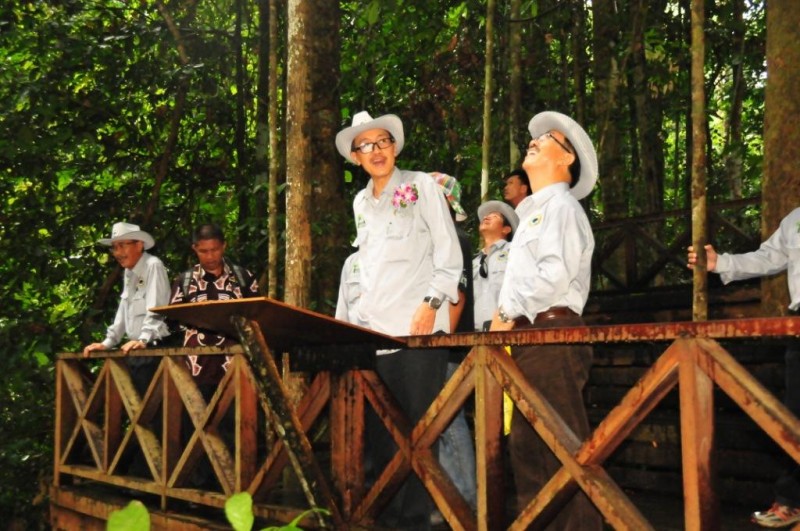All articles of environment in Sabah
21Jan
MoU signed to preserve forest for orang utan and elephants
KOTA KINABALU: An eco resort in ecologically sensitive Kinabatangan will preserve its 40 ha natural forest as a corridor for orang utan and Borneo pygmy elephants.
Myne Resort signed a memorandum of understanding with the Borneo Conservation Trust (BCT) to create and manage the forest land that connects two plots of land under the Kinabatangan Wildlife Sanctuary.
The pilot project is the first towards the establishment of an orang utan observation centre in Sabah, especially in the Kinabatangan Mega Biodiversity Corridor.
State Tourism, Culture and Environment Minister Datuk Masidi Manjun said it would help visitors observe and learn the behaviour of orang utan in natural forests while securing a forest corridor for endangered primates and elephants.
Witnessing the signing of the MoU between Myne Resort managing director Ouh Mee Lan and BCT head Raymond Alfred here yesterday, Masidi said he hoped more private agencies, such as plantations and landowners, would come forward to help secure and re-establish ecological corridors for wildlife in lower Kinabatangan.
He described the project as a milestone because it demonstrated an option on how to manage private natural forests effectively without converting them for other purposes, including for plantations.
“In this way, they would make a sustainable income for their own future,” he said.
“More landowners can consider moving into environmentally friendly activities that have a large tourist attraction.”
Under the 10-year agreement, the resort operator and BCT officials will design programmes for the benefit of wildlife and biodiversity as well as for tourism.
The project will become the first model in lower Kinabatangan that provides, among others, an observation tower for orang utan behaviour and wildlife monitoring using the latest technology and bird density and diversity observation and assessment.
Source : The Star





